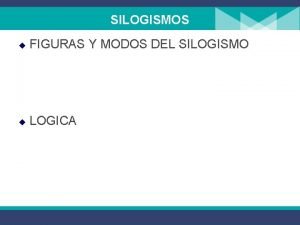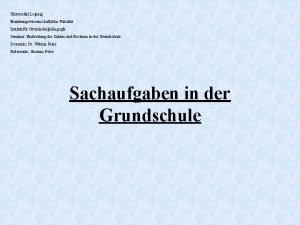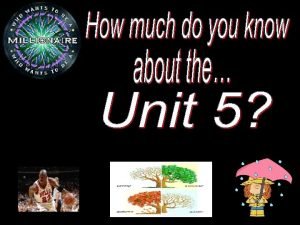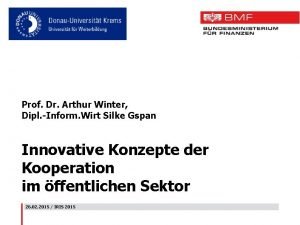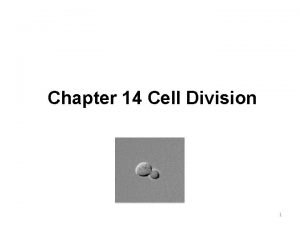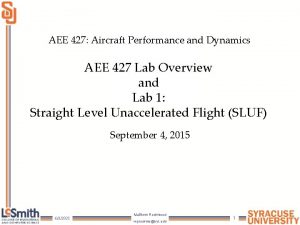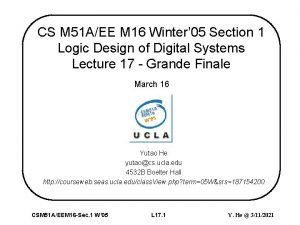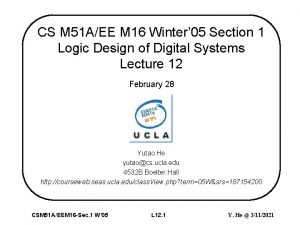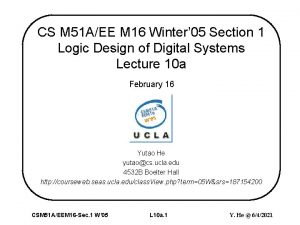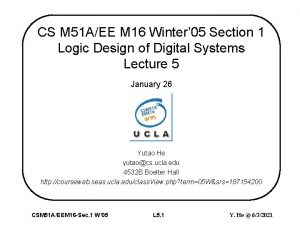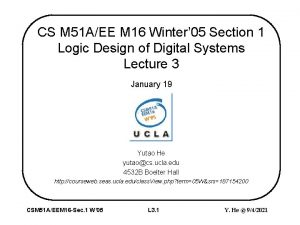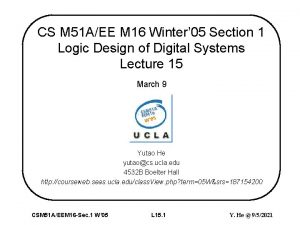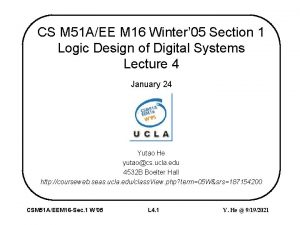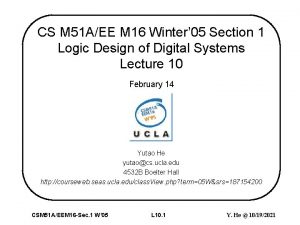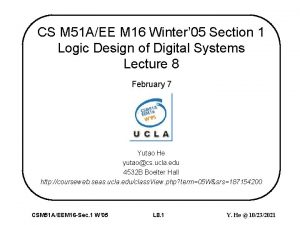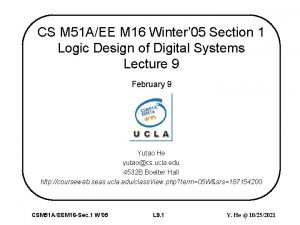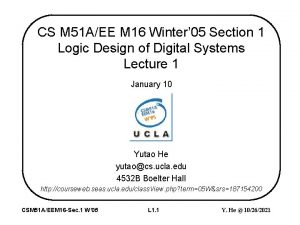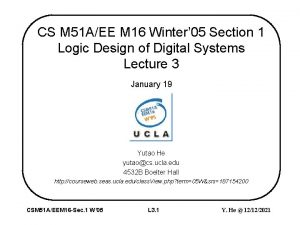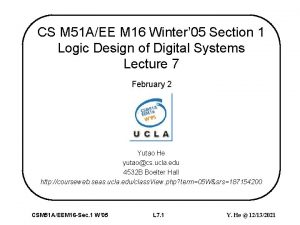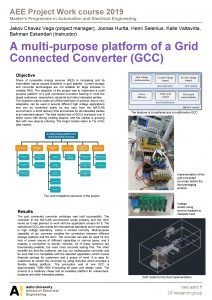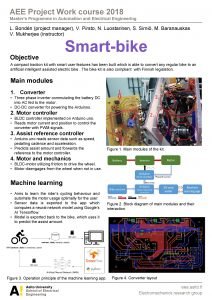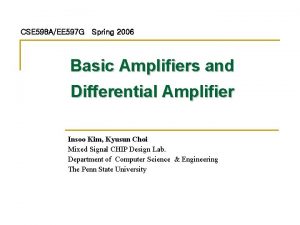CS M 51 AEE M 16 Winter 05


































- Slides: 34

CS M 51 A/EE M 16 Winter’ 05 Section 1 Logic Design of Digital Systems Lecture 16 March 14 W’ 05 Yutao He yutao@cs. ucla. edu 4532 B Boelter Hall http: //courseweb. seas. ucla. edu/class. View. php? term=05 W&srs=187154200 CSM 51 A/EEM 16 -Sec. 1 W’ 05 L 16. 1 Y. He @ 11/24/2020

Outline • Administrative Matters • Recap – Registers – Shift Registers • Chapter 11 – Sequential macro modules – Counters CSM 51 A/EEM 16 -Sec. 1 W’ 05 L 16. 2 Y. He @ 11/24/2020

Administrative Matters • HW# 9 – Is posted and will be self-graded – Describes how the topics in Ch. 11 and 12 will be tested • The Final – Is given on Friday – A review session will be held on Wednesday – Extra office hours will be scheduled • My office hours this week – Monday and Wednesday * 6 -7: 30 pm – Thursday * 7: 30 -9 pm • Graded work CSM 51 A/EEM 16 -Sec. 1 W’ 05 L 16. 3 Y. He @ 11/24/2020

Chapter 11 Sequential Modules Sequential Systems Design Analysis Module networks (Register, Shift Register, Counter) Flip-Flops (D, JK, SR, T FFs, etc. ) Chapter 11 Chapters 7 -8 • Basic Questions: – What are each module’s property? * inputs, outputs, functions (high-level and binary level) – How to implement it using FFs and logic gates? – How to design a sequential system using these modules? – How to analyze a sequential system using these modules? CSM 51 A/EEM 16 -Sec. 1 W’ 05 L 16. 4 Y. He @ 11/24/2020

n-Bit Register CSM 51 A/EEM 16 -Sec. 1 W’ 05 L 16. 5 Y. He @ 11/24/2020

Shift Registers m CLK Shift Register CTL n • Basic Types: – – Serial In/Serial Out (SI/SO): m=n=1 Serial In/Parallel Out (SI/PO): m=1, n> 1 Parallel In/Serial Out (PI/SO): m>1, n=1 Parallel In/Parallel Out (PI/PO): m, n > 1 CSM 51 A/EEM 16 -Sec. 1 W’ 05 L 16. 6 Y. He @ 11/24/2020

Modulo-p Counter CLK TC Modulo-p Counter CTL n CSM 51 A/EEM 16 -Sec. 1 W’ 05 L 16. 7 Y. He @ 11/24/2020

Modulo-p Counter: High-Level Spec CSM 51 A/EEM 16 -Sec. 1 W’ 05 L 16. 8 Y. He @ 11/24/2020

Types of Modulo-p Counter • Sequencing direction – Up counter – Down counter – Up/Down counter • Number of states or Encoding scheme – – Binary counter Decimal (a. k. a. Decade) counter non-power-of-2 counter Gray code counter • Ways of implementation – Ring counter – Twisted tail (a. k. a. Johnson, Mobius) counter – Ripple counter CSM 51 A/EEM 16 -Sec. 1 W’ 05 L 16. 9 Y. He @ 11/24/2020

Types of Modulo-p Counters (Cont’d) • According to numbers and encoding scheme of states: Decimal CSM 51 A/EEM 16 -Sec. 1 W’ 05 L 16. 10 Y. He @ 11/24/2020

Types of Modulo-p Counters (Cont’d) Modulo-4 Ring Counter Modulo-8 Twisted Tail Counter CSM 51 A/EEM 16 -Sec. 1 W’ 05 L 16. 11 Y. He @ 11/24/2020

Self-Starting Counter • The problem: – Given a counter that does not use all state combinations of the storage elements, how to initialize a counter with a valid state? • The concept of self-starting: – From any initial state, a counter can eventually enter the valid counter sequence. • Example: A modulo-5 counter 111 000 110 010 101 011 111 001 110 010 101 011 100 Not Self starting CSM 51 A/EEM 16 -Sec. 1 W’ 05 100 000 L 16. 12 Y. He @ 11/24/2020

Binary Mod-16 Counter with Parallel Input CSM 51 A/EEM 16 -Sec. 1 W’ 05 L 16. 13 Y. He @ 11/24/2020

Binary Counter: High-Level Spec CSM 51 A/EEM 16 -Sec. 1 W’ 05 L 16. 14 Y. He @ 11/24/2020

Applications of Counters (1) • Count number of occurrence of an event CSM 51 A/EEM 16 -Sec. 1 W’ 05 L 16. 15 Y. He @ 11/24/2020

Applications of Counters (2) • Control a fixed sequence of actions CSM 51 A/EEM 16 -Sec. 1 W’ 05 L 16. 16 Y. He @ 11/24/2020

Applications of Counters (3) • Generate timing signals CSM 51 A/EEM 16 -Sec. 1 W’ 05 L 16. 17 Y. He @ 11/24/2020

Applications of Counters (4) • Generate clocks of different frequencies CSM 51 A/EEM 16 -Sec. 1 W’ 05 L 16. 18 Y. He @ 11/24/2020

Network of Counters • Basic approaches of interconnection – Cascade counters * To get longer period – Parallel counters * To get more states CSM 51 A/EEM 16 -Sec. 1 W’ 05 L 16. 19 Y. He @ 11/24/2020

Cascade Counters CSM 51 A/EEM 16 -Sec. 1 W’ 05 L 16. 20 Y. He @ 11/24/2020

Parallel Counters • Design a modulo-504 counter – 504=7 x 8 x 9 – 000, 111, 222, 333, 444, … CSM 51 A/EEM 16 -Sec. 1 W’ 05 L 16. 21 Y. He @ 11/24/2020

Design Using Binary Counters • Typical Problems: – Given a modulo-p counter, implement: * * * modulo-k (up) counter, where 1 k p a-to-b counter, where 1 a < b p modulo-k down counter up/down modulo-k counter any sequential systems • Basic approach: – Try to design the “glue logic” around the basic counter: * How to perform initialization * How to detect a state * How to skip a state CSM 51 A/EEM 16 -Sec. 1 W’ 05 L 16. 22 Y. He @ 11/24/2020

Binary Modulo-16 Counter TC CSM 51 A/EEM 16 -Sec. 1 W’ 05 CLR CNT Modulo-16 Counter CLK LD I 3 I 2 I 1 I 0 S 3 S 2 S 1 S 0 L 16. 23 Y. He @ 11/24/2020

Design with Modulo-16 Counter 4 • • s Modulo-16 Counter • x 4 I • • CSM 51 A/EEM 16 -Sec. 1 W’ 05 L 16. 24 Y. He @ 11/24/2020

Design A Modulo-12 Counter CLR CNT Modulo-16 Counter CLK LD I 3 I 2 I 1 I 0 S 3 0 S 2 0 S 1 S 0 0 x S 0 S 1 S 3 0 TC CSM 51 A/EEM 16 -Sec. 1 W’ 05 L 16. 25 Y. He @ 11/24/2020

Design A 1 -to-12 Counter CLR CNT Modulo-16 Counter CLK LD I 3 I 2 I 1 I 0 S 3 0 S 2 0 S 1 S 0 0 x S 2 S 3 1 TC CSM 51 A/EEM 16 -Sec. 1 W’ 05 L 16. 26 Y. He @ 11/24/2020

Design A Modulo-16 Down Counter • The key observation: – Each next state needs to be loaded from parallel inputs I 3, I 2, I 1, I 0 when count input is 1. CLR CNT Modulo-16 Counter CLK LD I 3 I 2 I 1 I 0 S 3 S 2 S 1 S 0 x Comb. Logic TC(-) S 3 S 2 CSM 51 A/EEM 16 -Sec. 1 W’ 05 x S 1 S 0 L 16. 27 Y. He @ 11/24/2020

A Modulo-16 Down Counter - Cont. • Function Table: – Inputs: S 3, S 2, S 1, S 0, and x – Outputs: I 3, I 2, I 1, I 0, and TC(-) x=1 x=0 S 3 S 2 S 1 S 0 I 3 I 2 I 1 I 0 TC(-) 0 0 0 0 1 0 0 0 0 0 1 0 1 1 0 0 0 1 1 1 1 0 0 • What about a Modulo-12 down counter? CSM 51 A/EEM 16 -Sec. 1 W’ 05 L 16. 28 Y. He @ 11/24/2020

Design A Up/Down Modulo-16 Counter • Need to introduce mode control inputs: – (x, y)=(1, 0) Up – (x, y)=(0, 1) Down – x = y, do not change CLR CNT Modulo-16 Counter CLK LD I 3 I 2 I 1 I 0 S 3 TC(+) S 2 S 1 S 0 Comb. Logic TC(-) S 3 S 2 CSM 51 A/EEM 16 -Sec. 1 W’ 05 x y x’y S 1 S 0 L 16. 29 Y. He @ 11/24/2020

Design Any Sequential Systems • Key steps: – Obtain the transition tables – Design the combinational logic CSM 51 A/EEM 16 -Sec. 1 W’ 05 L 16. 30 Y. He @ 11/24/2020

Example 1 • Using a modulo-16 counter, implement a counter with the following periodical sequence: 0, 2, 5, 6, 7, 9, 10, 12, 13, 15 CLR CNT Modulo-16 Counter CLK LD I 3 I 2 I 1 I 0 S 3 S 2 S 1 S 0 Comb. Logic TC S 3 CSM 51 A/EEM 16 -Sec. 1 W’ 05 S 2 x x S 1 S 0 L 16. 31 Y. He @ 11/24/2020

Example - Cont. x=0 x=1 S 3 S 2 S 1 S 0 I 3 I 2 I 1 I 0 TC 0 0 0 0 1 0 0 0 - - - 0 0 0 0 1 0 0 - - - 0 0 1 0 0 0 0 1 0 1 0 0 0 1 1 - - - 0 0 1 1 - - 1 1 1 1 0 0 1 CSM 51 A/EEM 16 -Sec. 1 W’ 05 L 16. 32 - Y. He @ 11/24/2020

Summary • Chapter 11 – Counter CSM 51 A/EEM 16 -Sec. 1 W’ 05 L 16. 33 Y. He @ 11/24/2020

Next Lecture • Chapter 12 - ROM • Final Review • Course Evaluation CSM 51 A/EEM 16 -Sec. 1 W’ 05 L 16. 34 Y. He @ 11/24/2020
 Aee shpk
Aee shpk Aee cd20f
Aee cd20f Figuras y modos
Figuras y modos Plano de aee
Plano de aee Aee
Aee Besnik likollari
Besnik likollari Ethics of civility in education
Ethics of civility in education Winter kommt winter kommt flocken fallen nieder
Winter kommt winter kommt flocken fallen nieder Winter kommt winter kommt flocken fallen nieder
Winter kommt winter kommt flocken fallen nieder Winter kommt winter kommt flocken fallen nieder
Winter kommt winter kommt flocken fallen nieder Waukesha airport code
Waukesha airport code 2016-17 snow forecast
2016-17 snow forecast Yesterday by patricia pogson annotated
Yesterday by patricia pogson annotated Winter driving safety topics
Winter driving safety topics Those winter sundays meaning
Those winter sundays meaning Funktionen des sachrechnens nach winter
Funktionen des sachrechnens nach winter Tongue twister whether the weather
Tongue twister whether the weather They are usually wearing coats in winter
They are usually wearing coats in winter Winter are snow temperature records
Winter are snow temperature records What do you do usually on weekends
What do you do usually on weekends Gedicht klasse 5
Gedicht klasse 5 Winter safety brief
Winter safety brief Bundesverwaltung
Bundesverwaltung Mister frosty winter
Mister frosty winter Timothy winters worksheets
Timothy winters worksheets A tall winter's tale
A tall winter's tale Jennifer de winter
Jennifer de winter Winter coloring page
Winter coloring page Kim ki duk spring summer fall winter
Kim ki duk spring summer fall winter Embedded innovator winter 2010
Embedded innovator winter 2010 Spring autumn fall
Spring autumn fall Brian's winter pictures
Brian's winter pictures My winter vacation
My winter vacation Cell continuity definition
Cell continuity definition Those winter sundays meaning
Those winter sundays meaning


